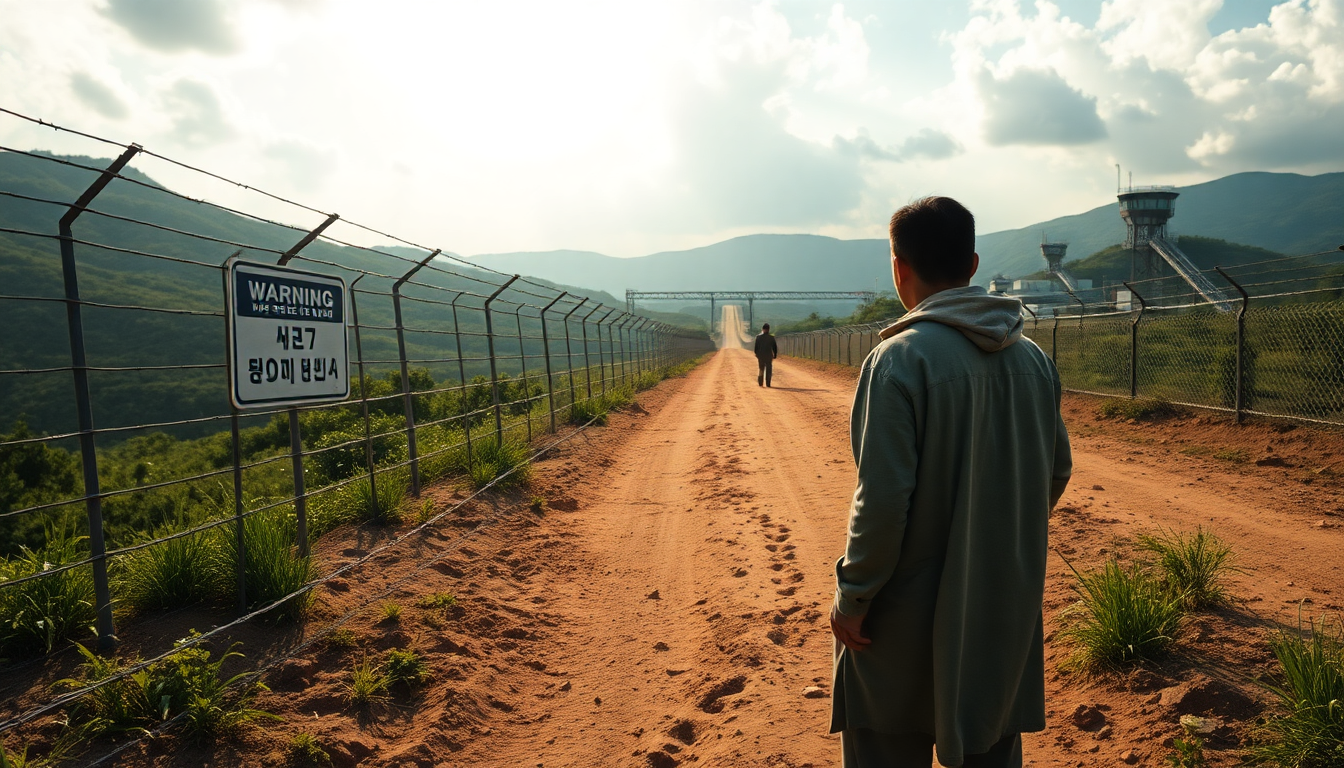Table of Contents
The ongoing geopolitical struggle on the Korean Peninsula recently witnessed a remarkable event: an unidentified North Korean man crossed the heavily fortified border into South Korean territory. This incident, which unfolds against a backdrop of fluctuating tensions, raises intriguing questions about what might motivate such a bold action and its implications for inter-Korean relations.
The Context of the Crossing
On a late Thursday, this unarmed man embarked on a risky journey across the Demilitarized Zone (DMZ), one of the most fortified borders anywhere. Reports indicate that South Korea’s Joint Chiefs of Staff were closely monitoring his movements as he navigated the dangerous, mine-laden terrain.
Once he reached South Korean soil, he was taken into custody, but military officials have yet to clarify whether he intended to defect or was simply seeking refuge.
The timing of this crossing is particularly significant, occurring as the newly elected South Korean administration under President Lee Jae Myung shifts its approach.
Since taking office, Lee has been working to ease hostilities with the North, halting loudspeaker broadcasts that previously sent messages across the border and attempting to restrict balloon launches by activists who carry pro-democracy materials. But could this new strategy be sending mixed signals?
A Shift in Strategy and the Backlash
This softer approach has not been without its critics. Some argue that it may weaken South Korea’s deterrent capabilities against Kim Jong Un’s regime, potentially emboldening North Korea to escalate provocations. This concern is heightened by recent incidents, including reports of North Korea launching balloons carrying trash into South Korean territory—a move interpreted as a deliberate act of provocation.
Interestingly, the frequency of border incidents seems to be increasing. Just months ago, there were reports of North Korean troops crossing into the South before retreating after warning shots were fired. This rise in activity, especially involving individual defectors, is worth noting; historically, North Koreans seeking asylum have preferred to take routes through China instead of risking the perilous DMZ.
What could this trend mean for future crossings?
What This Means for Future Diplomacy
The implications of this defection are far-reaching, especially considering the stalled diplomatic talks between the United States and North Korea since 2019. After the collapse of denuclearization negotiations, Kim Jong Un has doubled down on efforts to expand North Korea’s nuclear arsenal, perpetuating threats toward both Seoul and Washington. This precarious situation puts immense pressure on South Korea to carefully navigate its foreign policy while managing the complexities of its relationship with the North.
Meanwhile, the U.S. has reaffirmed its commitment to a strong alliance with South Korea and Japan, keeping a watchful eye on North Korean activities. Officials have consistently warned that any aggression from Pyongyang will be met with a firm response. With the geopolitical landscape remaining tense and unpredictable, how will South Korea balance its approach to the North amidst these challenges?
As this situation continues to unfold, analysts will be keenly observing how this individual crossing may influence broader inter-Korean relations and the potential for future diplomatic engagement—or conflict. Will it pave the way for more communication, or will tensions rise further?





